AdventureSmith Founder Todd Smith shares lessons and adventure from his Costa Rica Coast to Coast family trip to Costa Rica’s premier rainforest parks in Tortuguero and the Osa Peninsula.
Upon arrival at the airport in San Jose our cheerful guide Roy greeted us warmly, but on the way to our hotel he presented some bad news. The main highway from San Jose to Limon was closed due to painting, and our drive tomorrow would increase from 3 hours to 5 hours. Our family group learned right away to be patient and experience travel to Costa Rica as a sense of adventure.
Costa Rica Family Travel
We were a group of two families of four, each with 2 boys age 7–11 years old. Traveling with kids presents unique challenges, especially in the rainforest, and this custom trip was designed with this in mind. This Costa Rica family tour review outlines how we planned this trip to meet these challenges and includes some insight we learned along the way.
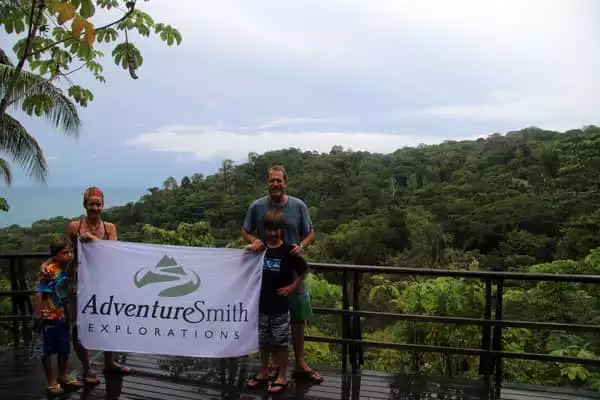
The primary purpose of our Costa Rica travel plan was to have up-close nature and wildlife explorations that would allow parents and kids to experience the Costa Rica rainforest together. We used ecolodges that connect closely with nature but are also comfortable and have swimming pools. The trip incorporated cultural elements in addition to nature and adventure activities. Finally, we scheduled a lot of activity in the company of top-notch guides, but also some down time for kids to play and parents to relax. Learn more tips and advice about rainforest travel with kids.
San Jose to Tortuguero
Upon arrival in Costa Rica, our first overnight was at the new Studio Hotel in San Jose. The hotel is about 25 minutes from the airport (depending on traffic) and provides an atmosphere of elegant art at the same price or less as standard airport hotels. The hotel has a pool, although we didn’t have time to use it.
We awoke early, not easy after a long day of travel from our home in California to Costa Rica. The alternative route took us through coffee farms on the flanks of the Poas volcano. Our guide stopped to show us how coffee is grown and introduce us to the history of coffee in Costa Rica. The kids were more fascinated with the line of leaf cutter ants marching through the field, and my youngest son did not rest until he found the source of the insect river. On a long drive such as this, it is important to let the kids get out and explore.
Farther on, the weather turned to tropical rain, which made a stop at the La Paz waterfall even more spectacular. After another bathroom and snack stop, the drive was finally over. We traded our van for a covered motorized boat for the final 1.5-hour trip to the lodge.
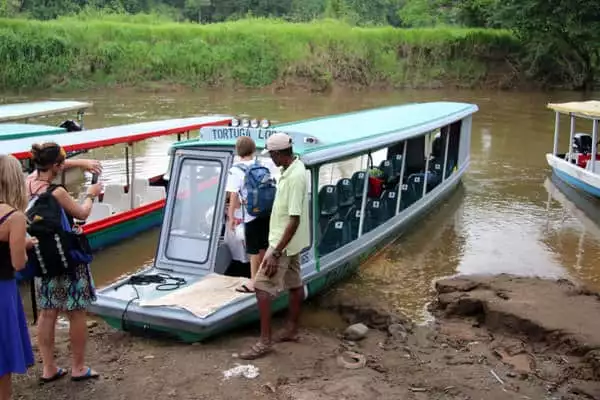
This is where the real adventure begins! Tortuguero is only accessible by boat through a series of rivers and canals. Along the way we began to see the spectacular wildlife the area is known for. Most dramatic was a huge crocodile resting on the banks of the river. Just as one of the kids asked “is that a real crocodile or is it rubber?” it lunged forward and splashed into the water.

We also saw basilisk lizards, iguanas, howler monkeys and numerous birds. Finally, at about 2pm (and 2 hours late because of the road closure) we reached the Tortuga Lodge and our famished families went straight to lunch. We purposely had no plans this afternoon so we settled into our rooms, explored the trails around the lodge and rested in hammocks while the kids swam in the pool. We were thrilled to finally be in the Costa Rican rainforest.
Tortuga Lodge
The Tortuga Lodge, owned by our partners at Costa Rica Expeditions, is one of the oldest and finest lodges in Tortuguero. It is not fancy by mainstream travel standards, but it is (and indeed has been) a model for upscale sustainable lodges around the world. Rooms are open to the jungle with screens instead of windows, so they are exposed to the sounds of the rainforest. Howler monkeys will replace your alarm clock. The rooms are clean and comfortable with electricity and a private bath. They have fans instead of air conditioning. Standard rooms have a double bed, a single bed and a fold-out couch. I suggest rooms upstairs where tropical breezes help cool the room. The rooms are a fairly good size, but families who appreciate more space will want to consider the Penthouse Suite or two rooms next to each other.
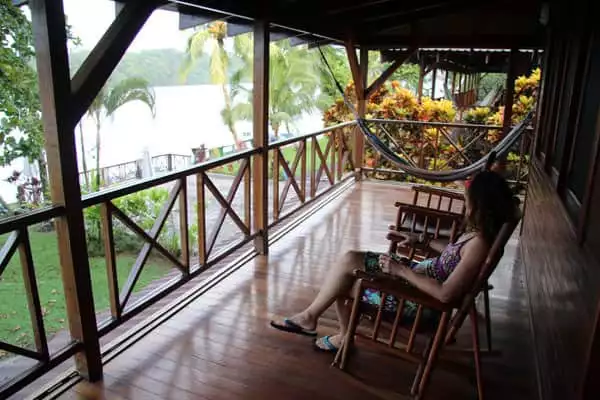
What really distinguishes Tortuga Lodge from other lodges in Tortuguero are the people who work there. The service is outstanding and personal, the food is incredible and the guides are the best in the business. My friend Michael Kaye, who founded Tortuga Lodge, says that vacation time is precious; this philosophy is apparent every minute at the lodge.
The next morning we had an early boat exploration into Tortuguero National Park. Our local guide, Norton, who had been on our transfer boat yesterday, helped us into the small open boat and we were off. On this day we had good weather, which means no rain in this wet place. The excursion was great and we had many sightings including howler monkeys and spider monkeys, which thrilled the kids. But three hours in a small boat is a long time for three families with small kids (we had shared this Costa Rica tour with another family), and we were eager to get back on land and the kids to the pool.

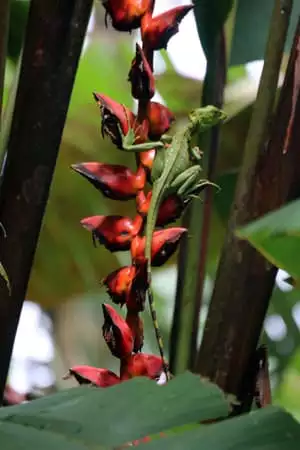
Tortuguero
Exploring Tortuguero National Park is unique because you explore the jungle by small boat instead of on foot. Rainforest wildlife is often difficult to spot and can frustrate kids who cannot see it. I specifically planned this because it would be easier for the kids to explore and learn to find animals so they would gain an appreciation of the rainforest and appreciate the rainforest environment early in the trip. I suggest travelers provide each child with their own pair of binoculars.
After a leisurely lunch and siesta, Norton took us across the river to Tortuguero Village. We started at the Sea Turtle Conservancy Visitor Center where we learned how Atlantic sea turtles use nearby beaches to lay their eggs. Tortuguero National Park was originally created in 1975 to protect the turtles but has since been expanded to cover over 77,000 acres of primary and secondary rainforest.

We had planned a kayaking excursion on our last day; however, all night and all morning it had been pouring rain. The rain came down in torrents accompanied by spectacular lighting displays and booming thunder. We asked Norton what he thought, and he said, “I like rainforest kayaking in the rain; I think you will enjoy it.” We weren’t so sure. Just after breakfast the weather cleared a bit, and our group loaded the boat that took us to a non-motorized area of the park.
Norton and our boat driver unloaded the kayaks for us and we boarded double, open-topped sea kayaks with one parent and one child in each. We entered a narrow waterway that seemed to be a cathedral of green with trees, vines and life towering over us for hundreds of feet. Then the rain came. It was one of those downpours we had feared. We wore swim shorts and t-shirts so that after about 10 seconds were soaked. The weather was still warm so soon we grew accustomed to the rain. The rain continued for about 10 minutes before the skies cleared and the sun came out so hot we were glad to be drenched.
“I see something, a monkey!” and sure enough there is a troop of spider monkeys directly above our head.
We paddled waterways far too narrow for even a small boat, and up close to the forest floor we could see basilisk lizards, nesting bats, agouti and birds fishing in the shallows. Kayaking is so quiet you can really experience the solitude and sounds of the rainforest in a more meaningful way. As we made our way back to the boat I said to my son, “Let’s paddle near Norton, that way when he sees something we will be the first to know.” My son says, “I see something, a monkey!” and sure enough there is a troop of spider monkeys directly above our head. We watched for about 10 minutes as they descended from the canopy to just above our heads. They seemed as curious about us as we were about them. Kayaking through the rain in Tortuguero was a family adventure we will never forget, and we were glad Norton had encouraged us to go.
After another lunch and siesta (notice the pattern here), we departed for the Tortuga Lodge’s unique Word program where we would help teach English to local students. We boated to the tiny village of San Francisco where parents and kids sat down with a teacher from the lodge and a small group of smiling Costa Rican kids. We spent about 40 minutes with them reciting English words, working on words for clothing. For our kids it was a chance to practice their Spanish, but also to meet local kids. Afterwards we went outside for a “menjenga” or friendly pickup game of futbol (soccer in US). This really helped break down barriers, and soon all the kids and adults were enjoying a raucous muddy game on the village field with macaws flying above and laughing children everywhere. We were so moved by the experience that back at the lodge we made a donation to help build a school expansion in the town.
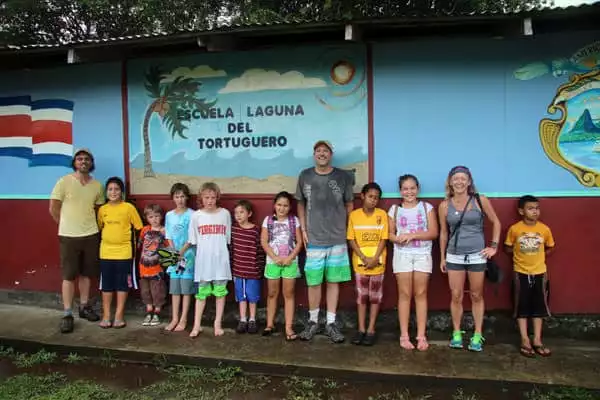
Tortuguero to Osa Peninsula
We were sad to depart Tortuguero the next day, but I was excited to proceed to our next destination in the Osa Peninsula. Since we were literally transiting across the entire country from North Atlantic to South Pacific, we had arranged scheduled flights from Tortuguero to Puerto Jiminez with a stop in San Jose. We had considered a charter flight, which would have eliminated the stop in San Jose, but the price was too high for our families. But is a good option for families who want to shorten this trip as much as possible (vacation time is precious, right Michael?). Note that these domestic flights are aboard small 6–12 seat planes small enough to get in and out of the remote airstrips that dot the country. We arrived in Puerto Jiminez before lunch, and a 45-minute transfer took us to Lapa Rios Ecolodge, near the tip of the Osa Peninsula.
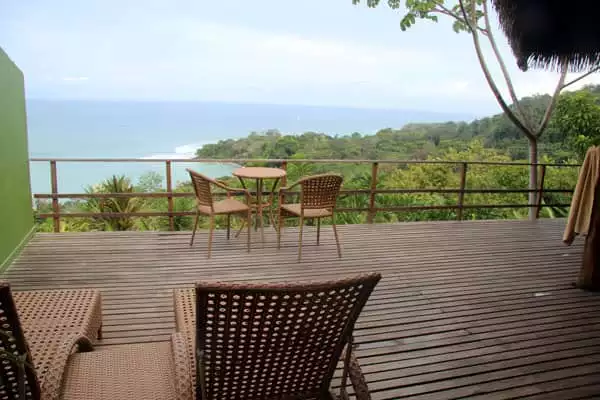
We were greeted warmly with a cool drink, checked into our rooms and ate lunch. Then the first order of business was to get the kids into the pool. As we jumped in the pool we noticed iguanas on the ground and a group of keel-billed toucans in the trees. This would set the tone for many spectacular wildlife sightings right from the lodge and our rooms.
Lapa Rios Ecolodge
Like the Tortuga Lodge, Lapa Rios is an ecolodge in every sense of the word. Set high on a ridge above Matapalo Beach (one of the most incredible surf breaks you will find), the lodge supports a 1,000-acre private rainforest reserve. Smack in the middle of the Osa Peninsula next to Corcovado National Park, Lapa Rios offers the ultimate rainforest experience. It was recently recognized by National Geographic as one of only 24 unique ecolodges of the world.
The main lodge reaches four stories into the rainforest canopy with a dramatic spiral staircase rising to an observation deck high in the palapa roof. Most bungalows are set along the ridge (insist on a room with an ocean view rather than jungle view). Each bungalow has two double beds with a private bath, electricity, and a private deck with outdoor shower. Rooms have screened windows open to the sights and sounds of nature with no air conditioning. Some nights were hot during our May trip, but in-room fans, the outdoor shower and frequent visits to the pool and waterfall helped keep us cool.

Lapa Rios is known for its outstanding guides and commitment to sustainability. Our guides were not only personal and knowledgeable but they also had experience working with kids and did a great job keeping them engaged. Included in the rate is a menu of activities such as a morning birding walk, wild waterfalls hike, a medicine tour, a starfish walk, a night walk and several longer 2–4 hours hikes. The staff presents nightly interpretive programs ranging from talks on wildlife to hosting local dancers. They have thought of everything, including walking sticks, water bottles and rubber boots. The service and cuisine were also excellent with other travelers coming from nearby lodges just to taste the food.
Osa Rainforest Explorations
After pool, lunch and siesta, we decided on the afternoon birding walk. Leaving directly from the lodge we walked through the rainforest to nearby ranches where the open landscape made birding easier. Immediately we began spotting colorful birds; while none of our group are birders, we enjoyed the show of toucans, parakeets, woodpeckers, aracari, oropendola, orioles, tanagers and more. Just as the kids were getting anxious we spotted a flock of scarlet macaws and several perched on a dead tree near our group. Surprisingly a car came to pick us up so we didn’t have to walk back to the lodge. The kids (and parents) rejoiced!
Over the course of five days and four nights at Lapa Rios we enjoyed a number of activities. We started the with the 2.5-hour waterfall hike. It ended at a beautiful waterfall and swimming hole only 10 minutes from the lodge, which we visited several times during our stay. The challenging 3-hour ridge hike pushed the kids a bit, but since they had been acclimatized to the rainforest they were expert wildlife spotters and could answer many of the guides leading questions, which kept them engaged. A night walk included frogs, snakes, spiders, sleeping birds and an armadillo. A walk to the nearby beach at Matapalo gave us an up-close look at an incredible 60-right wave that we had seen breaking from a distance at the lodge for days.

Lapa Rios Wildlife
The amount of wildlife at the lodge and on the hikes in this region is astounding. Lapa Rios is one of the most biologically diverse places in the world. All four species of Costa Rican monkey are found here, although we only saw howler monkeys, spider monkeys and squirrel monkeys. Other mammals include agoutis, coatamundis and a black tyra. Reptiles abound, from iguanas lounging near the pool to snakes, lizards and colorful frogs. Birds are ubiquitous, and it seems the family of toucans makes several appearances each day at the lodge. In fact, it seems that we saw as much wildlife from the lodge itself as we did on the excursions.
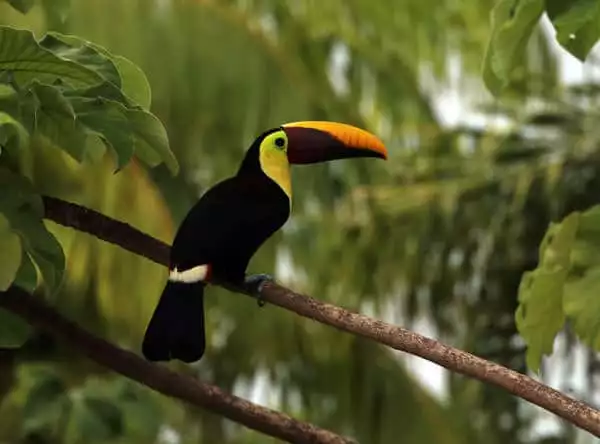
On our final day, we had a leisurely morning at the lodge before a transfer to Puerto Jiminez and a short flight back to San Jose. Travelers will overnight in San Jose before departing for home on the last day. Overall, this trip is 9 nights and 10 days with 2 nights in San Jose, 3 nights in Tortuguero and 4 nights in Lapa Rios.
Family travel to Costa Rica’s rainforest can be the trip of a lifetime, or not. A little planning, preparation and patience ensure your family learns to appreciate and enjoy life in the jungle. Call our experts to plan your custom Costa Rica family adventure.
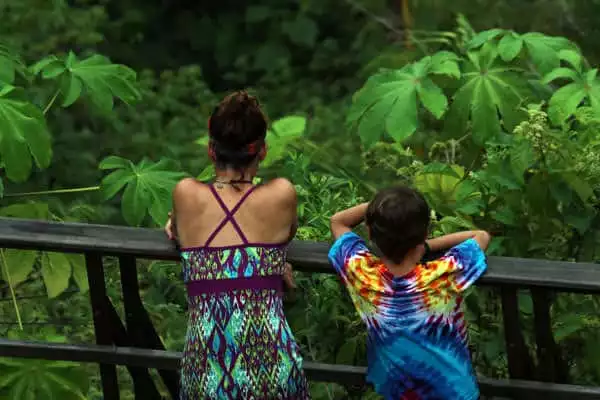
View more trip photos in my Costa Rica Facebook album for this trip, and see full trip details here: Costa Rica Coast to Coast.
This Costa Rica travel review was written by an AdventureSmith Explorations crew member. Read all AdventureSmith Expert Reviews for more trip reports, or contact one of our Adventure Specialists to learn more about these small ship cruises and wilderness adventures: 1-800-728-2875.
Comments will be moderated and will appear after they have been approved.